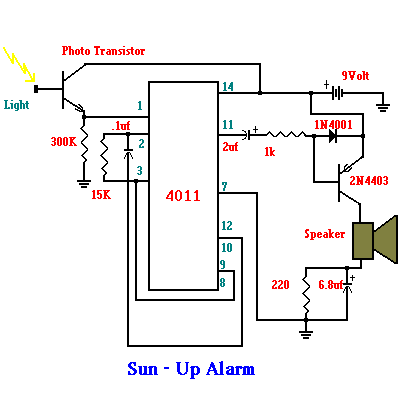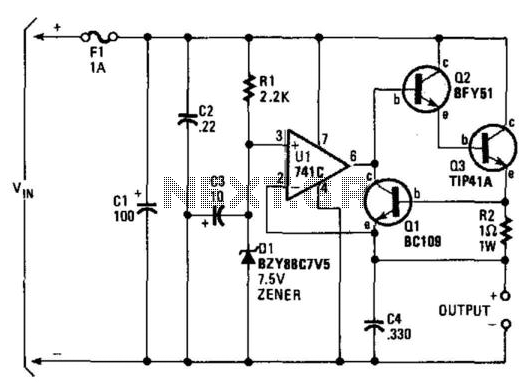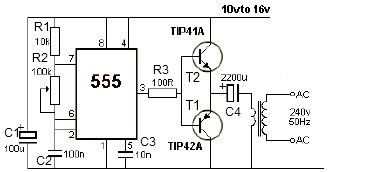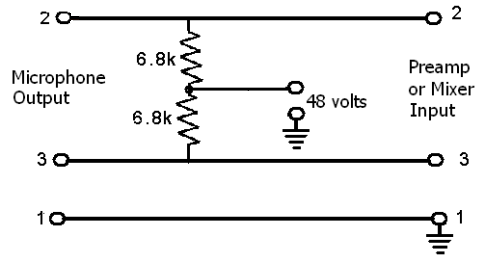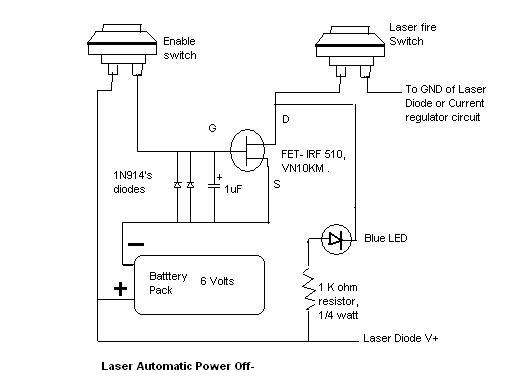
POWER FREQUENCY CONVERSION CONSIDERATIONS
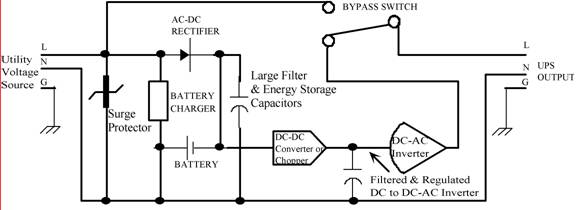
Thomas Edison developed the incandescent light bulb, which operated from a 110-volt DC source. The primary drawback of DC power was that it could only be distributed over short distances without needing to be regenerated. In the early 1900s, when Nikola Tesla was working for Westinghouse, he and Westinghouse found a solution to this problem by developing the first alternating current (AC) generating systems. These systems were more advanced than Edison's DC system, facilitating the transmission of AC power over very long distances. Tesla determined that AC power alternating at 60 cycles per second (60 Hertz) was the most efficient; therefore, the Westinghouse systems generated 60Hz AC power. Tesla further believed that 220 volts was the preferred voltage. Due to Edison's large investment in DC power, he attempted to thwart the advancement of AC power, campaigning that it was unsafe, especially at 220 volts. To win governmental approval, Westinghouse conceded to Edison's 110-volt standard. Consequently, 110 volts, 60Hz became the early standard for the United States and Canada. Today, the standard single-phase voltages are 120, 208, or 240 volts, with 120 volts at 60Hz found in the wall outlets of homes and offices across North America. Shortly after Tesla's pioneering work in AC power systems, the AEG Company in Germany developed its own AC power systems. They initially adopted the 110-volt standard but later decided to generate power at 50Hz because the number 60 did not fit the metric standard. They ultimately opted for a 220-volt standard as it was found to be more efficient. Since AEG was a large monopoly, their standards quickly spread throughout Europe, except for Britain, which did not adopt the European standards until the end of World War II. Today, the standard single-phase voltages found in the wall outlets of homes and offices in Europe are 220 or 230 volts at 50Hz. Power systems throughout the world today are based on either the U.S. or European frequency standards. The differing voltages and frequencies can pose real challenges for those wanting to operate equipment designed for one power environment in another. For example, voltage conversion may be required for equipment designed for domestic 120-volt, 60Hz power to operate on Europe’s 230-volt, 50Hz power. Other types of equipment may require both voltage and frequency conversion. To illustrate this point, Frankfort Electrical Services, an engineering firm specializing in solutions to electrical complexities such as frequency and voltage conversion for government and DOD-related firms, was presented with a challenge. The firm was approached by a local government agency that tests material and liquid samples for classified projects. The agency had recently purchased an upgraded chemical analyzer from a European manufacturer. This vacuum centrifuge analyzer was the only unit meeting the agency's rigorous demands for cutting-edge technological features such as CPU-based analysis with pre-programmed test methodologies and algorithms to speed up test results and lower operating costs. Although some 230VAC/50Hz equipment can perform if supplied with 220-240V/60Hz (U.S.) power, this analyzer would not operate on 60Hz power due largely to the delicate motor drives and other sub-components that require a precise, rock-solid, regulated 230VAC 50Hz input. In addition to needing precise voltage conversion, it also required uninterruptible power to ensure accurate lab results. After researching several frequency converters and power sources, Frankfort Electrical selected an online, double-conversion Uninterruptible Power Supply (UPS) from Falcon Electric. The SG 6kVA UPS provided advanced frequency conversion, precision voltage regulation, along with battery backup. Upon a power outage, the Falcon UPS ensured continuous operation.
The historical context of AC versus DC power generation is crucial for understanding modern electrical systems. Edison’s early work with incandescent bulbs laid the groundwork for widespread electrical lighting, but the limitations of DC power distribution necessitated innovation. Tesla’s contributions, particularly in the development of AC systems, enabled electricity to be transmitted efficiently over long distances, which is essential for current power grid infrastructures.
The transition from Edison's 110-volt DC to Tesla's 60Hz AC standard reflects the evolving needs of electrical distribution in urban and rural environments. The adoption of 220 volts in Europe, particularly by AEG, illustrates how regional differences in electrical standards emerged, influenced by factors such as efficiency and compatibility with existing technologies.
In practical applications, the need for voltage and frequency conversion becomes evident when integrating equipment designed for different electrical environments. The case of the chemical analyzer highlights the intricacies of modern laboratory equipment, which often demands specific power requirements to function optimally. The selection of an online double-conversion UPS, such as the Falcon SG 6kVA, exemplifies the solutions available for ensuring that sensitive equipment operates within its required specifications, thereby maintaining the integrity of critical testing processes. This underscores the importance of reliable power systems in contemporary technological applications, particularly in sectors where precision and accuracy are paramount.Thomas Edison developed the incandescent light bulb, which operated from a 110 volt DC source. The primary drawback to DC power was that it could only be distributed over short distances without having to be regenerated. In the early 1900s when Nicoli Tesla was working for Westinghouse, he and Westinghouse found a solution to this problem by developing the
first alternating current (AC) generating systems. These systems were advanced over Edison`s DC system, facilitating the transmission of AC power over very long distances. Tesla determined AC power alternating at 60 cycles per second (60 Hertz) to be the most efficient; therefore the Westinghouse systems generated 60Hz AC power.
Tesla further believed that 220 volts was the preferred voltage. Due to Edison`s large investment in DC power, he attempted to thwart the advancement of AC power. Edison campaigned that it was unsafe, especially at 220 volts. To win governmental approval, Westinghouse conceded to Edison`s 110 volt standard. Therefore, 110 volts, 60Hz became the early standard for the United States and Canada. Today, the standard single-phase voltages are 120, 208 or 240 volts, with 120 volts at 60Hz found in the wall outlet of homes and offices across North America. Shortly after Tesla`s pioneering work in AC power systems, the AEG Company located in Germany developed its own AC power systems.
They originally adopted the 110 voltage, but decided to generate the power at 50Hz because the number 60 did not fit the metric standard. They later decided on a 220 volt standard as they discovered it was more efficient. Since AEG was a large monopoly, their standards quickly spread throughout Europe, with the exception of Britain which did not adopt the European standards until the end of World War II.
Today the standard single-phase voltages found in the wall outlet of homes and offices in Europe are 220 or 230 volts at 50Hz. Power systems throughout the world today are based on either the U. S. or European frequency standards. The differing voltages and frequencies can pose real problems for those wanting to operate equipment designed for one power environment in another.
For example, voltage conversion may be required for some equipment designed for domestic 120 volt, 60Hz power to Europe`s 230 volt, 50Hz power. Other types of equipment may demand both voltage and frequency conversion. To illustrate this point, Frankfort Electrical Services, an engineering firm specializing in solutions to electrical complexities such as frequency and voltage conversion for government, DOD, and other government-related firms, was presented a challenge.
The firm was approached by a local government agency that tests material and liquid samples for classified projects. The agency had recently purchased an upgraded chemical analyzer from a European manufacturer. This vacuum centrifuge analyzer was the only unit meeting the agency`s rigorous demands for leading edge technological features such as CPU-based analysis with pre-programmed test methodologies/algorithms to speed up test results and lower operating costs.
Though some 230VAC/50Hz equipment will perform if fed 220-240V/60Hz (U. S. ) power, this analyzer would not operate on 60Hz power, due mostly to the delicate motor drives and other sub-components that require a precise, rock-solid, regulated 230VAC 50Hz input. In addition to needing precise voltage conversion, it also required uninterruptible power to ensure the lab results were accurate.
After researching several frequency converters and power sources, Frankfort Electrical selected an on-line, double conversion Uninterruptible Power Supply (UPS) from Falcon Electric. The SG 6kVA UPS supplied advanced frequency conversion, precision voltage regulation, along with battery backup.
Upon a power outage, the Falco 🔗 External reference
The historical context of AC versus DC power generation is crucial for understanding modern electrical systems. Edison’s early work with incandescent bulbs laid the groundwork for widespread electrical lighting, but the limitations of DC power distribution necessitated innovation. Tesla’s contributions, particularly in the development of AC systems, enabled electricity to be transmitted efficiently over long distances, which is essential for current power grid infrastructures.
The transition from Edison's 110-volt DC to Tesla's 60Hz AC standard reflects the evolving needs of electrical distribution in urban and rural environments. The adoption of 220 volts in Europe, particularly by AEG, illustrates how regional differences in electrical standards emerged, influenced by factors such as efficiency and compatibility with existing technologies.
In practical applications, the need for voltage and frequency conversion becomes evident when integrating equipment designed for different electrical environments. The case of the chemical analyzer highlights the intricacies of modern laboratory equipment, which often demands specific power requirements to function optimally. The selection of an online double-conversion UPS, such as the Falcon SG 6kVA, exemplifies the solutions available for ensuring that sensitive equipment operates within its required specifications, thereby maintaining the integrity of critical testing processes. This underscores the importance of reliable power systems in contemporary technological applications, particularly in sectors where precision and accuracy are paramount.Thomas Edison developed the incandescent light bulb, which operated from a 110 volt DC source. The primary drawback to DC power was that it could only be distributed over short distances without having to be regenerated. In the early 1900s when Nicoli Tesla was working for Westinghouse, he and Westinghouse found a solution to this problem by developing the
first alternating current (AC) generating systems. These systems were advanced over Edison`s DC system, facilitating the transmission of AC power over very long distances. Tesla determined AC power alternating at 60 cycles per second (60 Hertz) to be the most efficient; therefore the Westinghouse systems generated 60Hz AC power.
Tesla further believed that 220 volts was the preferred voltage. Due to Edison`s large investment in DC power, he attempted to thwart the advancement of AC power. Edison campaigned that it was unsafe, especially at 220 volts. To win governmental approval, Westinghouse conceded to Edison`s 110 volt standard. Therefore, 110 volts, 60Hz became the early standard for the United States and Canada. Today, the standard single-phase voltages are 120, 208 or 240 volts, with 120 volts at 60Hz found in the wall outlet of homes and offices across North America. Shortly after Tesla`s pioneering work in AC power systems, the AEG Company located in Germany developed its own AC power systems.
They originally adopted the 110 voltage, but decided to generate the power at 50Hz because the number 60 did not fit the metric standard. They later decided on a 220 volt standard as they discovered it was more efficient. Since AEG was a large monopoly, their standards quickly spread throughout Europe, with the exception of Britain which did not adopt the European standards until the end of World War II.
Today the standard single-phase voltages found in the wall outlet of homes and offices in Europe are 220 or 230 volts at 50Hz. Power systems throughout the world today are based on either the U. S. or European frequency standards. The differing voltages and frequencies can pose real problems for those wanting to operate equipment designed for one power environment in another.
For example, voltage conversion may be required for some equipment designed for domestic 120 volt, 60Hz power to Europe`s 230 volt, 50Hz power. Other types of equipment may demand both voltage and frequency conversion. To illustrate this point, Frankfort Electrical Services, an engineering firm specializing in solutions to electrical complexities such as frequency and voltage conversion for government, DOD, and other government-related firms, was presented a challenge.
The firm was approached by a local government agency that tests material and liquid samples for classified projects. The agency had recently purchased an upgraded chemical analyzer from a European manufacturer. This vacuum centrifuge analyzer was the only unit meeting the agency`s rigorous demands for leading edge technological features such as CPU-based analysis with pre-programmed test methodologies/algorithms to speed up test results and lower operating costs.
Though some 230VAC/50Hz equipment will perform if fed 220-240V/60Hz (U. S. ) power, this analyzer would not operate on 60Hz power, due mostly to the delicate motor drives and other sub-components that require a precise, rock-solid, regulated 230VAC 50Hz input. In addition to needing precise voltage conversion, it also required uninterruptible power to ensure the lab results were accurate.
After researching several frequency converters and power sources, Frankfort Electrical selected an on-line, double conversion Uninterruptible Power Supply (UPS) from Falcon Electric. The SG 6kVA UPS supplied advanced frequency conversion, precision voltage regulation, along with battery backup.
Upon a power outage, the Falco 🔗 External reference
